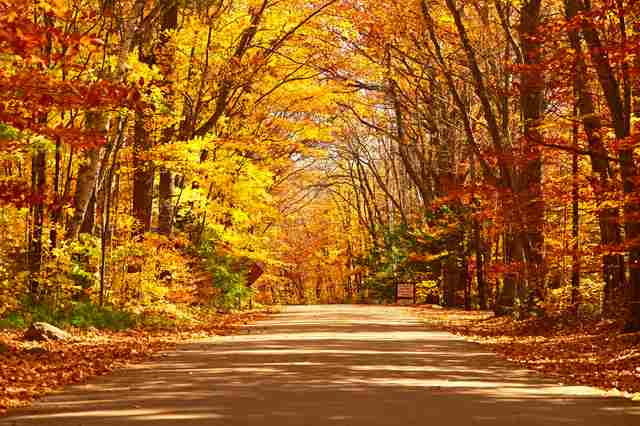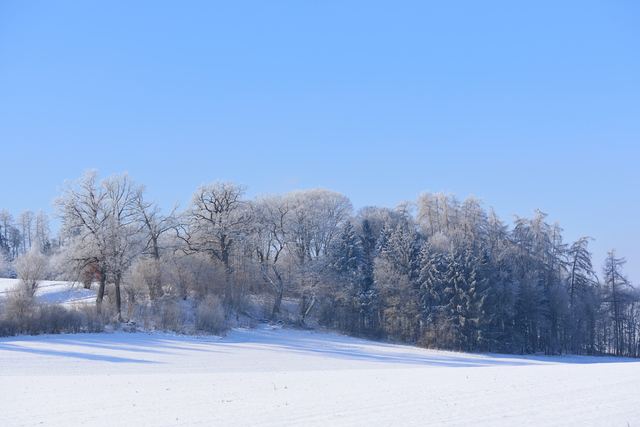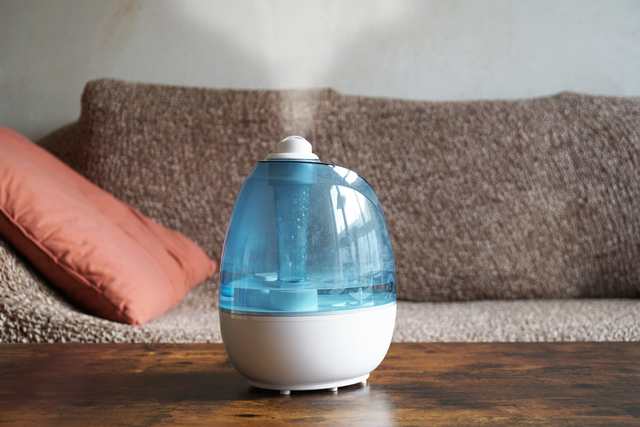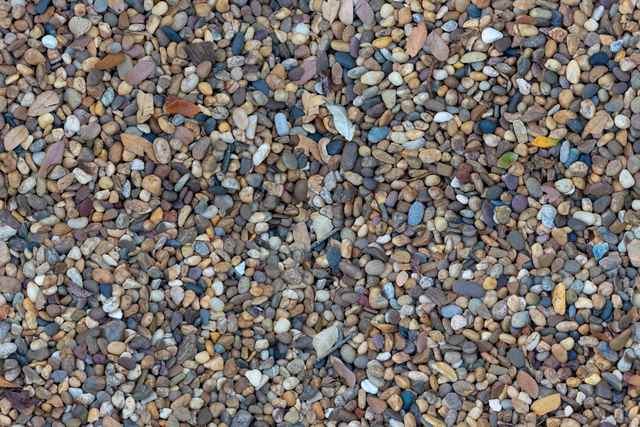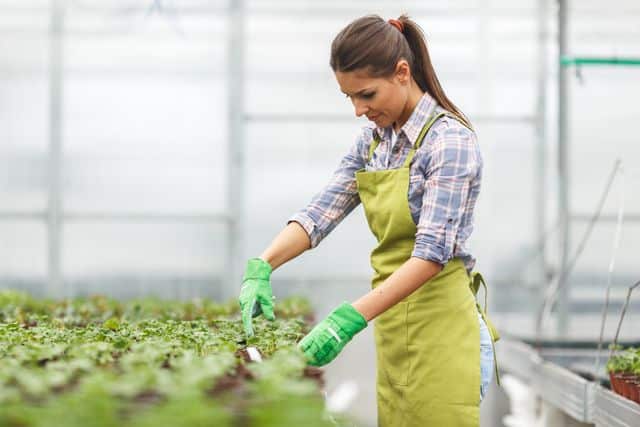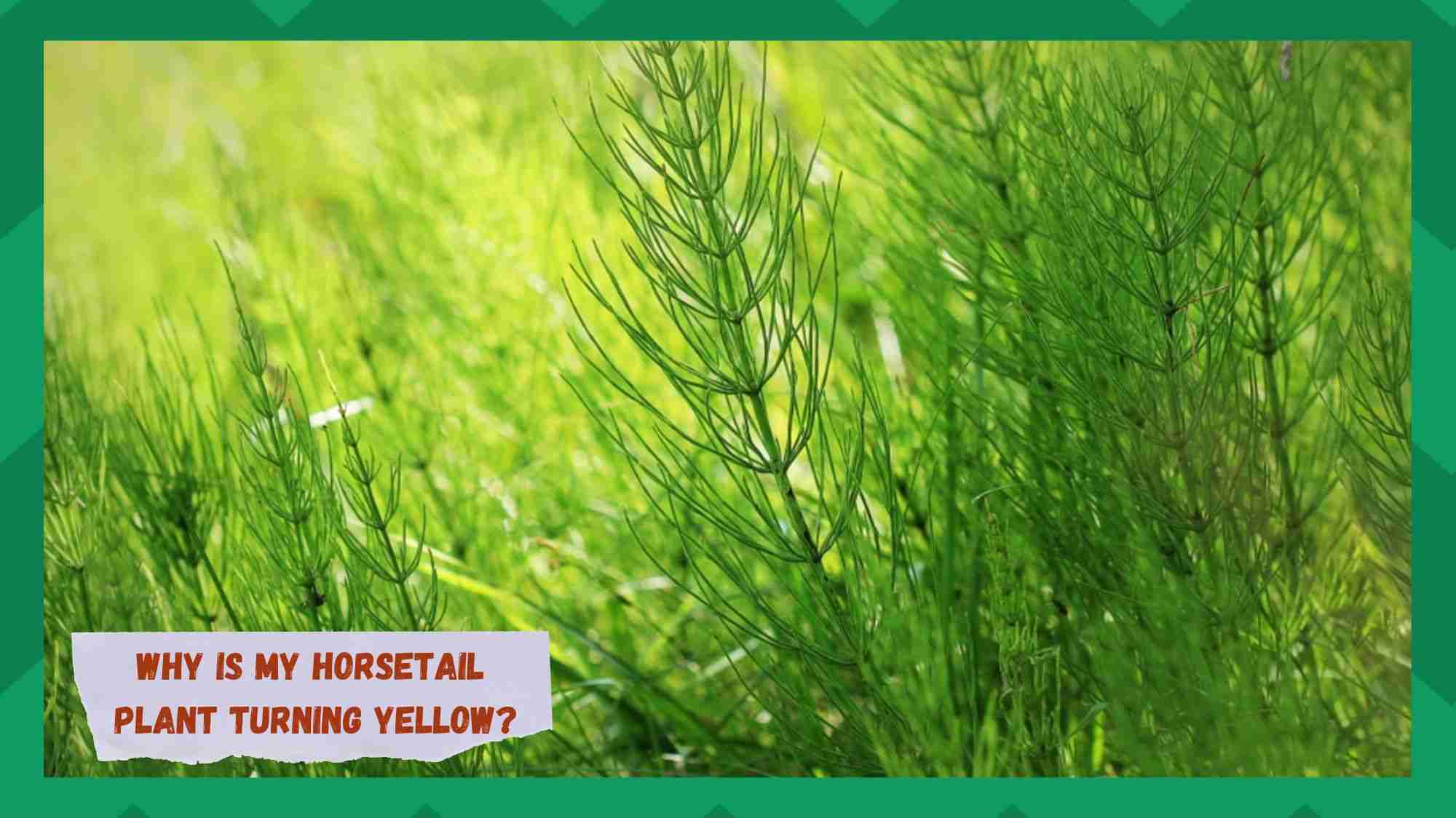
Horsetail is a fast-growing and deep-rooted perennial plant from the Polypodiopsida family of plants. It is grown across the globe for its amazing health benefits.
For starters, it strengthens your bones and has been used to treat various bone problems, including osteoporosis. It can also stop bleeding and heal wounds. Furthermore, it has nutrients that have shown excellent performance against kidney problems.
With that out of the way, if you have horsetail plants in your yard, you may have noticed that they turn yellow sometimes. Horsetail plants have a vibrant green color, and if they change their color, there is definitely something wrong with them.
It is a common problem associated with horsetail plants. This problem can be quite frustrating if you do not know its causes.
As a gardener, you must know all the common plant problems and how to deal with them. So, if you do not know why horsetail plants change their color, this article is for you.
This guide offers a look at some of the common reasons why your horsetail plants may turn yellow. Read on to learn the causes and solutions for this problem.
Why Is My Horsetail Plant Turning Yellow?
Are your horsetail plants turning yellow? Here are a few common causes and solutions.
- Seasonal Impact
In most situations, the horsetail plant will start to turn yellow and dry as a result of the seasonal impact. It usually happens at the start of fall. Of course, like every other plant, horsetail plants also have a certain life cycle.
They are perennials and die in the fall. There is nothing to worry about, and they will have their lush green color back once the fall ends.
There is nothing that you can do about the seasonal cycle except wait for the growing season. So, there is no solution if your horsetail plant has changed its color due to seasonal impact.
- Temperature Change
A sudden drop in temperature can also cause your horsetail plants to lose their green color. They love growing during summer and spring but may show a few problems during winter. So, if the temperature in your area has dropped below 5°F, that could be the reason why your horsetail plants have turned yellow.
If that’s the case, some parts of your horsetail plant may die. In case of harsh temperatures, the entire plant can also die.
If only a few parts of your horsetail plant have died, consider pruning them in summer to let new parts grow. However, if your entire horsetail plant dies, there is nothing you can do about it.
If you live in an area with a cold climate, it would be better to grow some other plant. There are some plants that thrive in winter and hate the full sun. Growing those plants will be a viable option.
However, if the climate of your area is warm enough and your horsetail plants have still changed their color to yellow, there is a good chance that your plant is not getting enough sunlight.
Of course, like all other plants, horsetail plants also need sunlight for optimal growth. It is essential for photosynthesis as horsetail plants use it to make their food.
If so, consider relocating your horsetail plant to some other area that receives more sunlight. Horsetail plants love sunlight, and you will notice a change as soon as you relocate them.
- Humidity Levels
Horsetail plants prefer high humidity levels. So, if your area has a dry climate and the moisture content in the atmosphere is low, the horsetail plants may turn yellow.
This is why these plants are usually grown in warmer areas. Areas with warm temperatures have high humidity levels, which is ideal for horsetail plants.
If your horsetail plant is dying due to low humidity, using a humidifier would be a great idea. A humidifier is a device used to add moisture to the atmosphere. When there is more moisture, your horsetail plants will regain their green color.
Apart from that, consider planting your horsetail plants in peat moss. Peat moss has the ability to absorb and retain its moisture, and it provides your plant roots with the moisture as per their requirements.
Using a humidity tray is another great way to provide moisture to your horsetail plants. These trays are readily available all over the world, and you can also make one at home.
If you are a DIY enthusiast and want to make a humidity tray at home, choose a tray that is at least two-inch wider than your pot. Using a tray made of terracotta is not recommended as it can absorb moisture.
Since you want to provide maximum moisture to your plants, it would be better to choose a tray that won’t absorb moisture. A plastic tray will do the job.
Next, get some average-sized rocks to fill the tray. You can use black pebbles or gravel for this purpose. If you cannot find them, consider referring to a botanist. They will recommend other suitable rocks that can be used instead.
If the rocks are dirty, do not forget to rinse them before adding them to your tray. To rinse the pebbles, put them in a strainer and rinse them until the water is clear. Once you have rinsed your pebbles, you are good to go! Now, simply add them to your tray and spread them evenly.
The final step is to add water to the tray. And yes, don’t go crazy while adding water. Yes, horsetail plants need more water than other plants, but overwatering can also damage them.
As a general rule, excessive amounts of anything, including water, can damage plants. If you add more water, the roots will soak it, and ultimately, your horsetail plant won’t be able to take up water.
- Maintenance Requirements
As mentioned earlier, horsetail plants require more water than other plants. So, it is advised to water them frequently. In winter, consider watering them daily to keep them in good health. And yes, remember that these plants like moderately wet soil. So, keep that in mind while watering them.
Fertilizing is not really necessary when it comes to horsetail plants. These plants do not need too fertile soil to thrive, so fertilizing is not a solution if your horsetail plants turn yellow.
However, if they show signs of nutrient deficiency, you may need to fertilize them. In such cases, it is better to visit a botanist. They will tell you if your plants should be fertilized and recommend an appropriate fertilizer.
The Bottom Line
Landscapers love horsetail plants for their lovely green look and health benefits. However, it is seen that these plants turn yellow sometimes. It usually happens during the early days of fall as horsetail plants die in fall.
Low humidity and temperature can also cause them to change their color. If so, consider using a humidifier or humidity tray to provide adequate moisture.


